Features of the Good to Great Companies
- Good leadership.
- They had the right people.
- The people knew the direction they were headed.
- They confronted brutal facts (Collins & Porras, 2002).
Good to great companies are characterized by good leadership. The people who are led know the direction they are heading. Consequently, they are able to confront any brutal facts they may encounter.
- They embraced the hedgehog concept.
- They never gave up.
- They were disciplined.
- They adopted technology to accelerate growth.
- They adopted the flywheel effect.
Technology will increase the companies’ productivity in that it will bring in new and better, effective and efficient ways of doing things. It should create a flywheel or other a responsibility that it will commit itself to executing to create a momentum in due time.
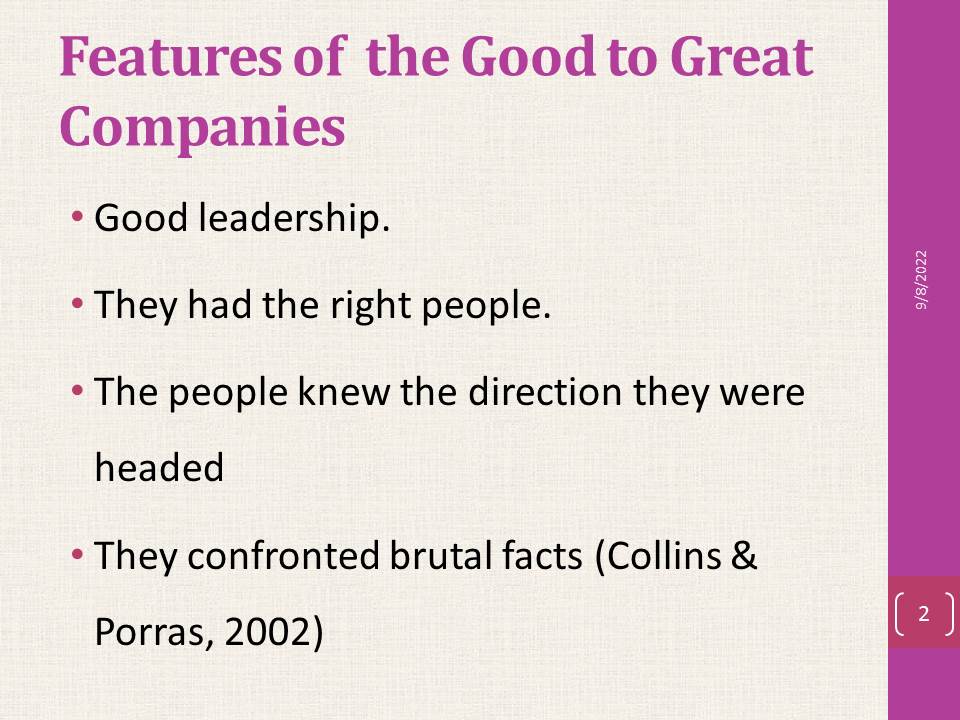
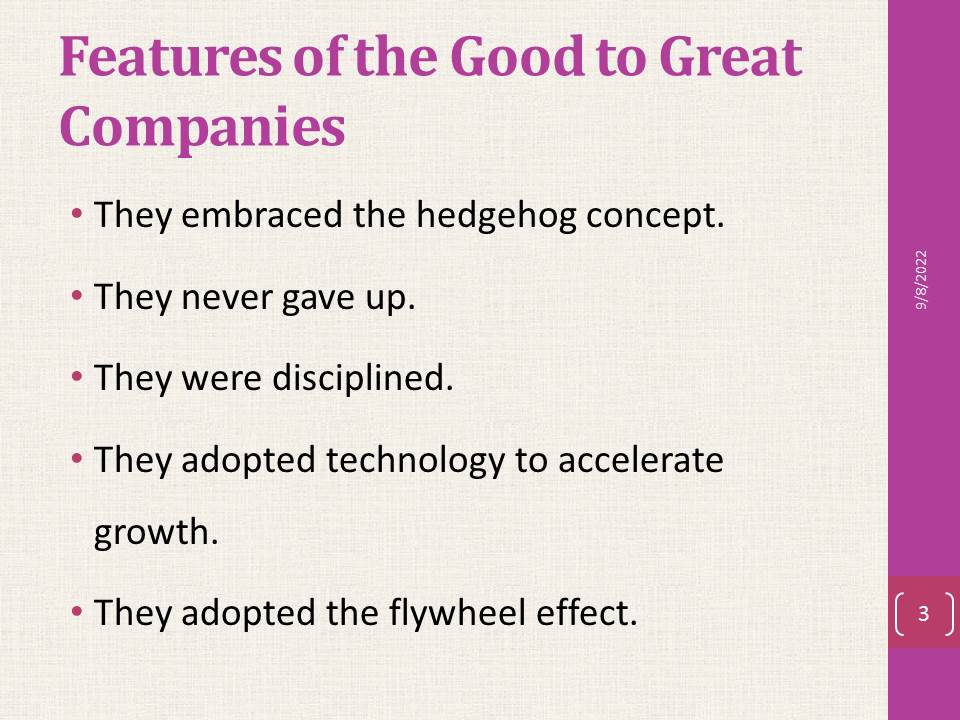
The 11 Good to Great Companies
- Abbott Laboratories;
- Circuit City Stores;
- Gillette Company;
- Kroger;
- Nucor;
- Fannie Mae.
These companies were sieved from among over 1, 000 companies which were included in the initial study. They are the only companies that exhibited the characteristics of a good to great company. They had succeeded from being good companies to the great companies they are now.
- Kimberly Clark;
- Philip Morris;
- Walgreens;
- Pitney Bowes;
- Wells Fargo.
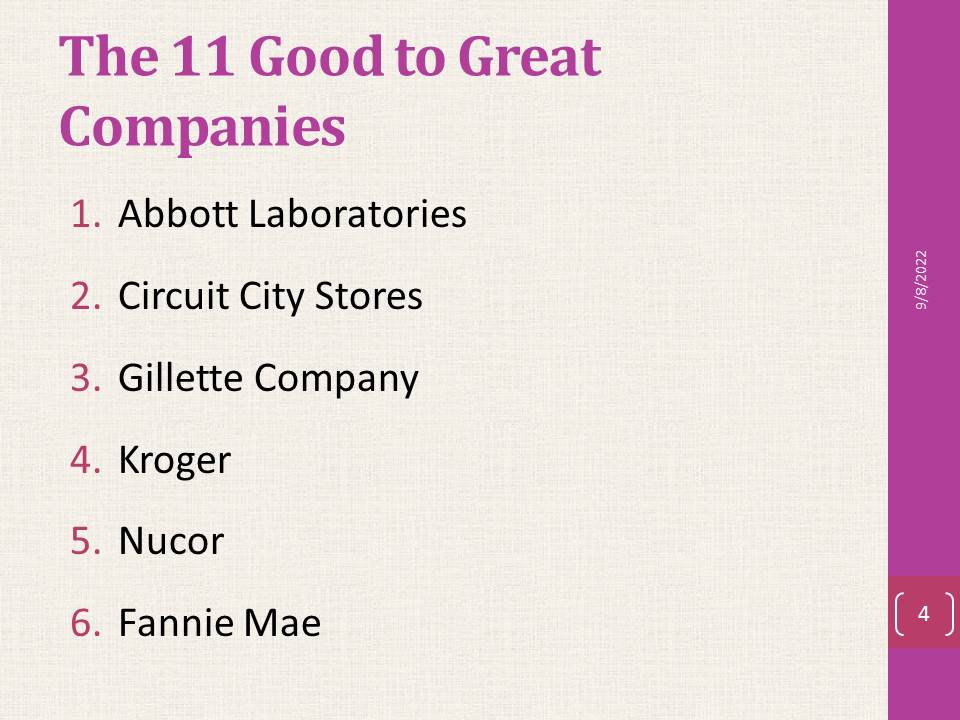
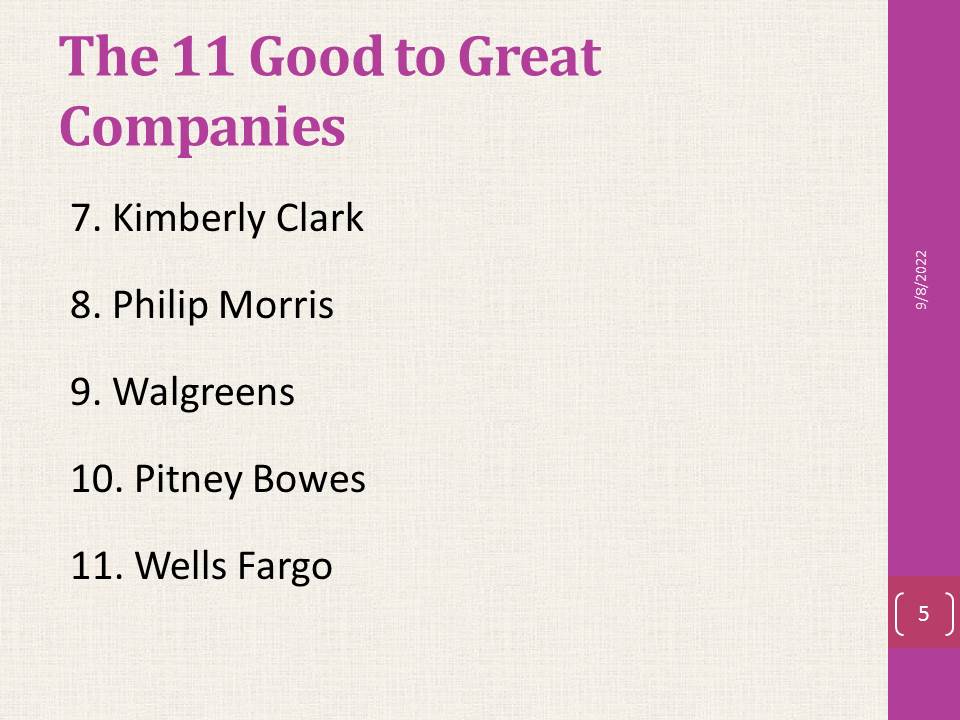
Why the 11 Companies?
- The companies had great returns on their investments.
- They had developed for sometime to become what they were.
- The companies had differentiated leadership.
- The companies showed persistence (Collins, 2011).
Not all the studied companies could be picked as being good to great. The research team had a number of reasons as to why it picked these companies. This was actually the criteria that the research team used to separate the good to great companies from the rest of the companies.
- The companies had an upward trend.
- There was a pattern of good performance.
- They had a transition point.
- They had company specific transitions.
- Their transition occurred before 1985 (Collins & Porras, 2002).
- The companies were stand-alone.
- They had influential leaders.
- They had self-motivated employees.
- They exhibited technical abilities.
- They had core ideologies (Collins, 2011).
- The companies were ongoing enterprises.
- They were in business for over 25 years.
- They had publicly traded stock.
- At least 10 years stock data was available.
- Average stock returns was 6.9 times that of general market.
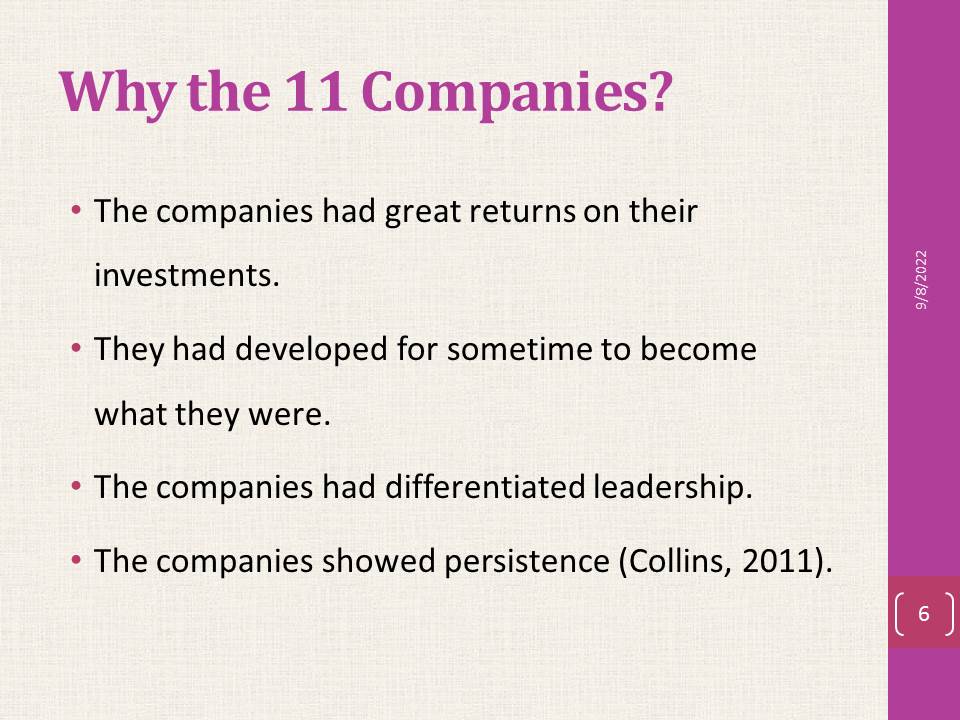
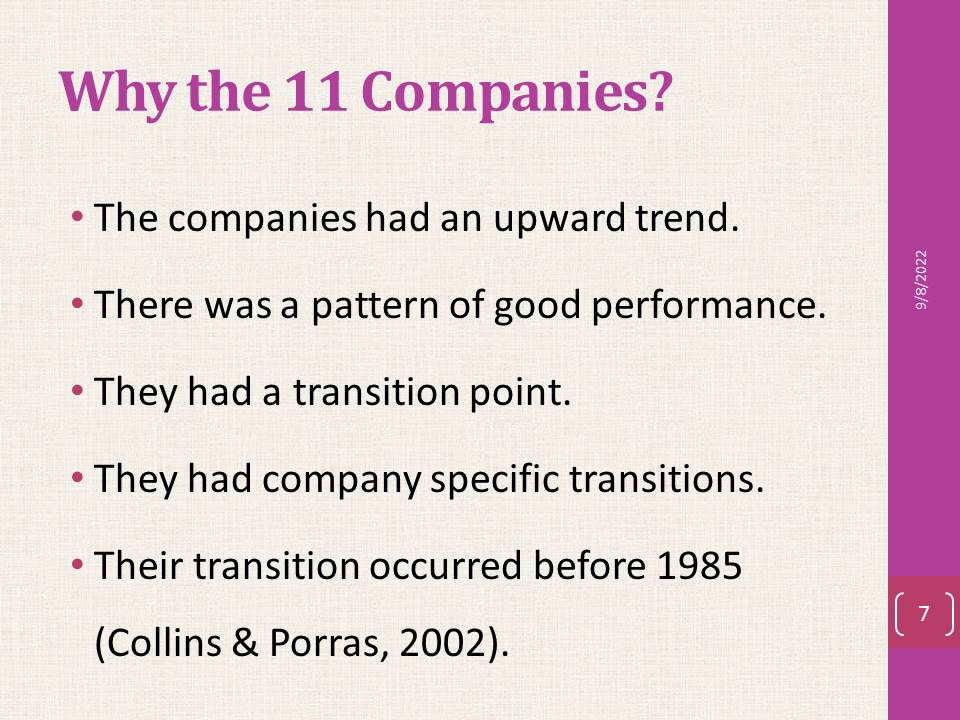
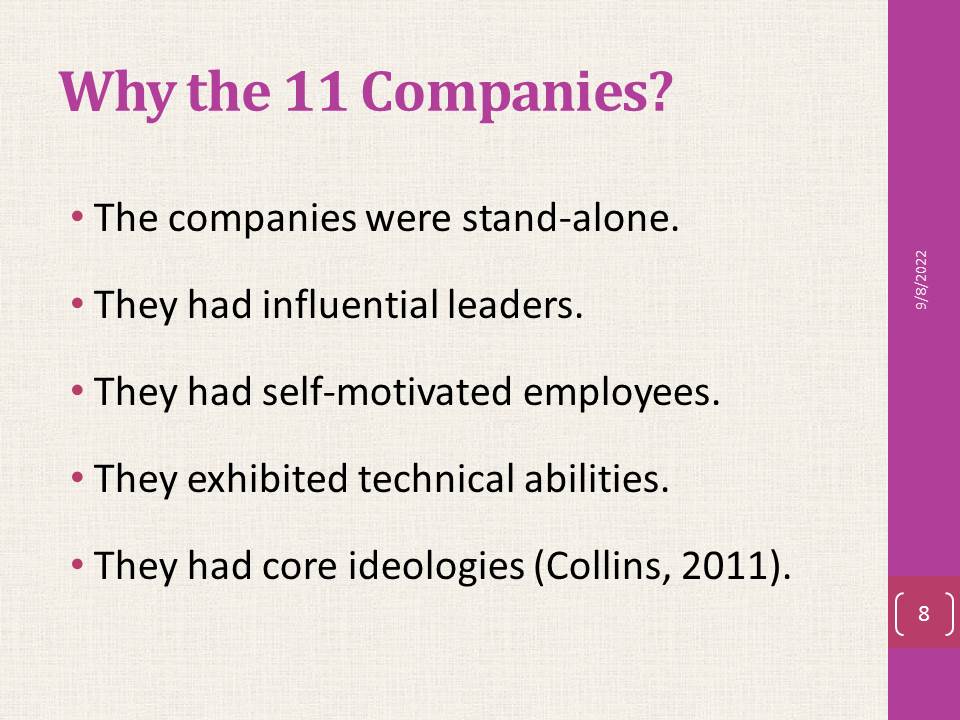
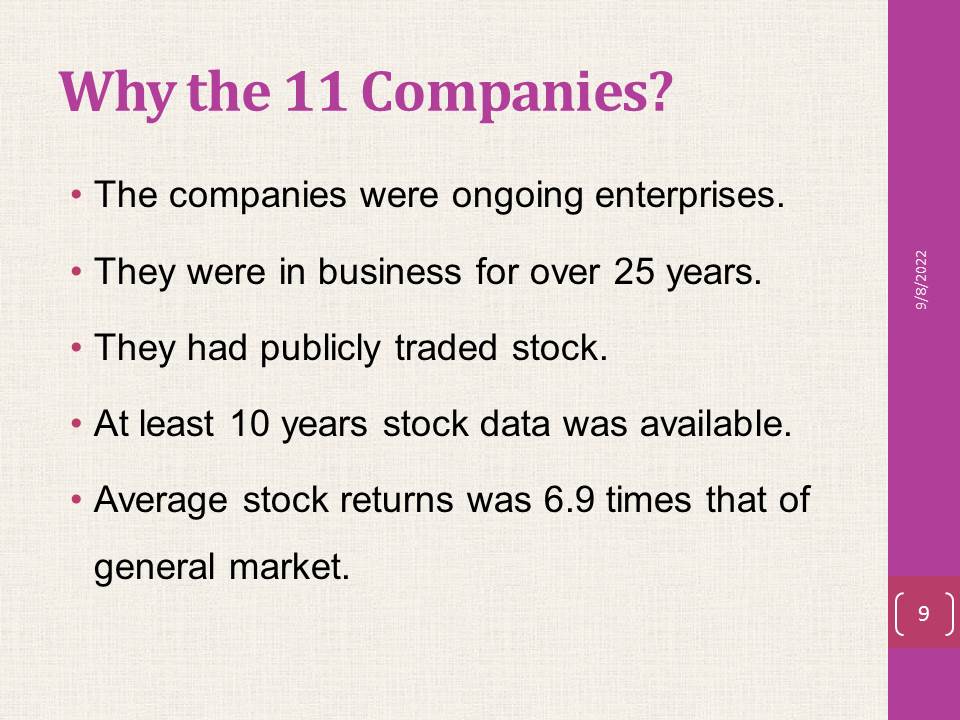
What the Companies Lacked
- They did not have celebrity fame.
- Their CEOs were not known by many.
- They did not have an individualistic culture.
- They did not have large stocks in the beginning.
Being a celebrity might divert the objective of the organization. It might influence an individualistic nature on the side of the CEO and managers. The good to great companies did it all by their own with no mergers or subsidiaries. This was an indicator of their abilities.
- They did not have subsidiaries.
- They did not have partnerships or mergers.
- They did not have a lot of hyped multinational operations (Watson, 2010).
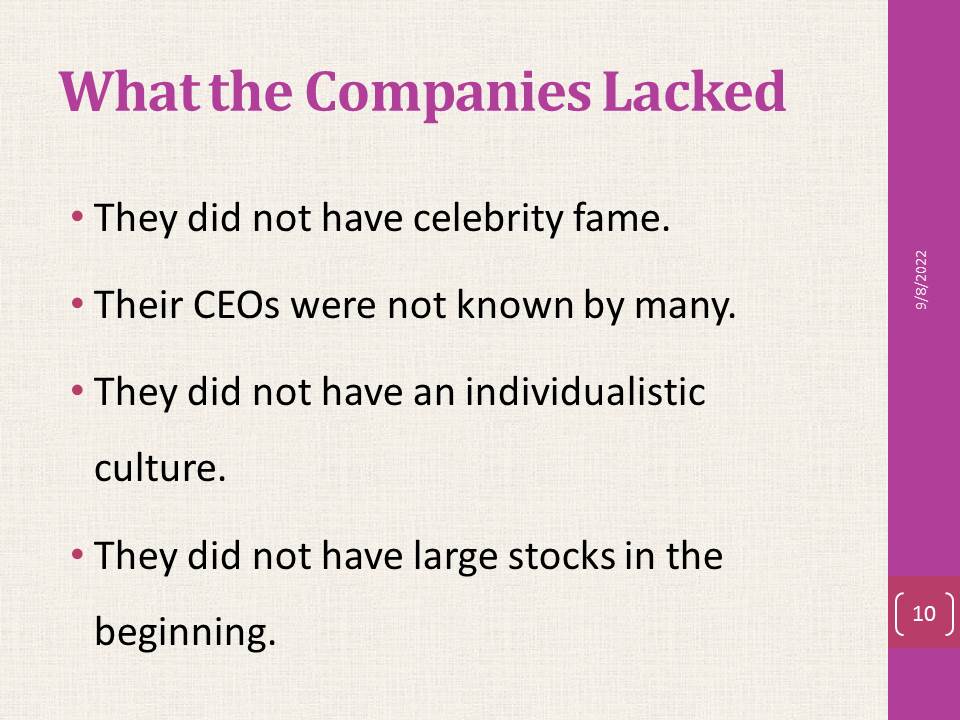
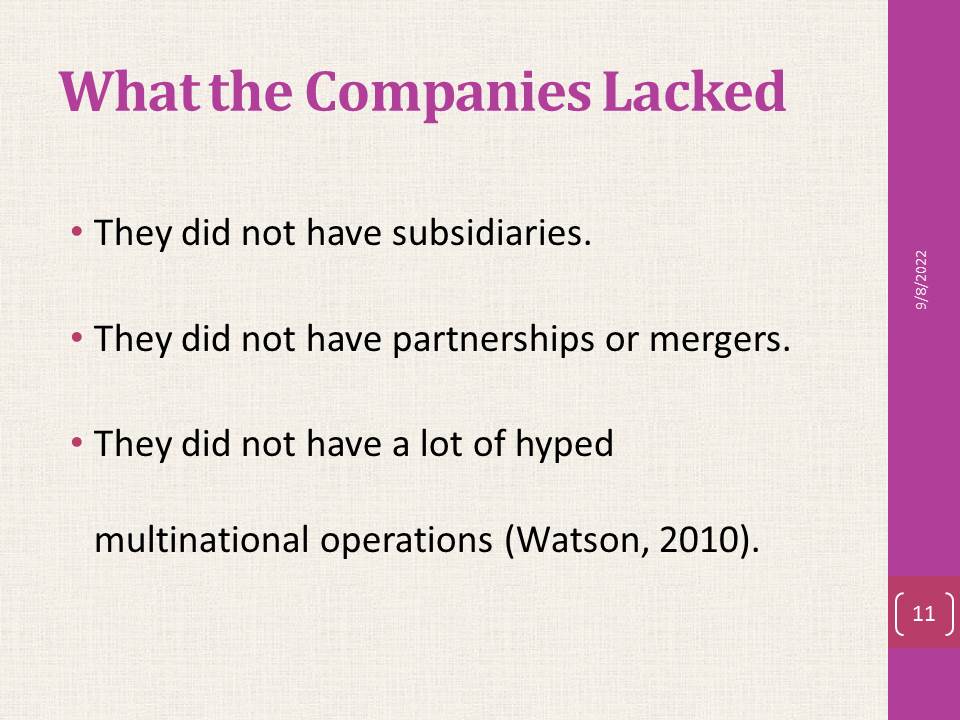
References
Collins, J. C. (2011). Good to great: Why some companies make the leap–and others don’t. New York, NY: HarperCollins.
Collins, J. C., & Porras, J. I. (2002). Built to last: Successful habits of visionary companies. New York, NY: Collins Business Essentials.
Watson, A. (2010). How to succeed with NLP: Go from good to great at work. London, UK: John Wiley & Sons.